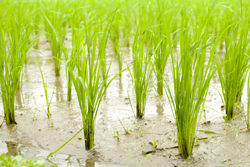How space and sensory technology can boost rice production
New ways of monitoring rice crops could provide growers with better information – including early warnings of possible threats – and enable more accurate yield predictions. These are some of the key objectives of the EU-funded ERMES project, which is set to hold its first annual meeting from 26 to 27 March 2015. The event will be held in Valencia, Spain and will give ERMES partners from Italy, Greece, Spain and Switzerland the chance to discuss progress made in developing new hi-tech methods for monitoring crops. The project aims to compile satellite and sensory data using advance smart applications and technologies. The data collected will be used to develop two new services to improve crop production in Europe. Both of these products will be distributed to local and regional users through two web-based services: a Local Rice Service (LRS) and a Regional Rice Service (RRS). The LRS will be targeted at farmers and the agricultural service sector. This will provide added value information for farmers on yield variability, risk alerts and crop damage at the farm scale. The service will help farmers plan where to spread pesticide, what rice varieties might grow best and what parts of the field might require fertilisation. To aid the collection of this kind of information, customised smart applications for mobile phones and/or tablets are being developed. These apps will enable farmers and field operators to collect data and automatically upload it to the ERMES database. It will also allow them to send geotagged messages and pictures with information of particular field conditions. The RRS on the other hand will be a customised agro-monitoring resource for crop mapping, yield estimating and risk forecast. This information is meant to be used by regional authority experts to support, for example, the production of digital bulletins on rice crop risks and yield forecasts. The service will allow regional operators to receive, visualise and analyse information at the regional scale. The three Mediterranean countries responsible for 85 % of Europe’s total rice production have been selected for trials: Italy (51.9 %), Spain (25.4 %) and Greece (7.0 %). Local farmers will provide vital field information, and act as sounding boards throughout the project (which runs from 2014 to 2017). The aims and objectives of the ERMES project were recently presented at the 18th European Weed Research Society (EWRS) scientific conference, held in Crete from 3 to 4 March 2015. ERMES, coordinated by CNR-IREA (Institute on Electromagnetic Sensing of Environment) in Italy, involves partners from four European countries with strong expertise in different scientific domains such as remote sensing, crop modelling agronomy and IT. In the long run, the project hopes to make a lasting contribution towards sustainable and competitive agriculture in Europe, through reducing production costs, achieving efficiencies and minimising the sector’s environmental impact. For further information please visit: ERMES http://www.ermes-fp7space.eu/
Countries
Italy



